

with
Herbert A. Bradley, Jr.
and
Mary Cynthia Bradley
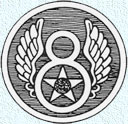 |
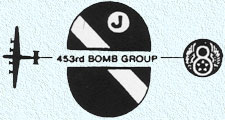 |
1999
Unpublished Word © 1999 George A. Lindsley
(Contact the Bradleys)
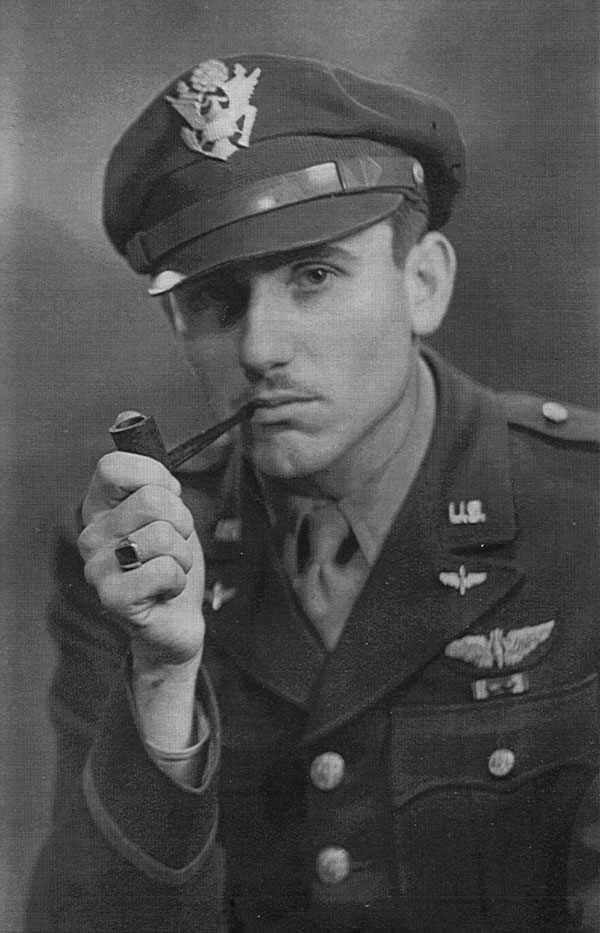
This book is the story
I happily and gratefully dedicate it
to the memory of my mother,
KATHRYN (Kate) GRIFFITH BRADLEY
who, during the Great Depression,
and in honor of
MARY CYNTHIA,my wife,
all of whom are
Herbert A. Bradley, Jr. --5--
[BLANK PAGE] --6--
Contents
Dedication / 5
Foreword / 7
Acknowledgements / 9
Photographs / 11
Figures and Maps 43/
1. In the Beginning / 73
2 Enlistment and Training / 75
3. Movement Overseas / 85
4. Old Buckenham / 91
5. The Mighty Eighth / 99
6. The B-24 -- Wings of War / 107
7. ... A Time of War / 115
8. To Fly a Mission -- Friedrichshafen / 119
9. Friedrichshafen Again / 131
10. CROSSBOW / 137
11. Luftwaffe Training Airbase -- Pau, France / 143
12. Snafu -- April 1, 1944 / 149
13. First Brunswick -- April 8, 1944 / 155
14. "Flak Hack" / 163
15. Pre-Invasion Operations / 167
16. Working on the Railroad / 175
17. THE BIG ONE -- Brunswick -- May 8, 1944 / 187
18. Countdown to Invasion / 199
19. D-Day, June 6, 1944 / 209
20. The Normandy Campaign / 215
21. Homeward Bound / 227
22. Jimmy Stewart Remembered / 233
23. Enemies No More / 237
24. War Ends / Peace is Better / 239
Photographs / 255
Lineage / 267
Chapter Notes and References / 279
Bibliography / 289
Dedication
of my life
in my youth, in war
and in peace.
cleaned houses for $2.00 per week
to get me through grade and high school,
and was always supportive of anything I wanted to do.
JANICE, our daughter, and
AMANDA and JIMMY,
our grandchildren,
the light of my life.
Foreword
All time, when it has passed, is history. It will live in the minds and hearts of those who lived it--so long as they live; but for all who follow, it must be learned from some recorded source. The "time of war"--World War II, 1942-1945, is such a time. It deserves to live. The men and women of that time deserve to be long remembered--they were of that generation of Americans who came of age during the Great Depression, fought and won the great war. Their victories saved the world from military conquest and subjugation. No one lives under the Nazi swastika nor the flag of the Rising Sun. The light of freedom and hope was not extinguished! They rebuilt a war-torn world and went on to give mankind a time of unparalleled progress.
Always Out Front is a writing about the life of Herbert Arthur Bradley, Jr. and particularly about his service in World War II. The title reflects an important dimension of his character--that in all he did, he sought to work hard, to excel, and to lead. This quality of his life is seen in the accounts of his high school years when he led the band in its first-ever parade and when he served as his senior class president. It is seen in his post-war years when he repeatedly led in sales for his company. And in the war, he was "always out front" as the bombardier of a mighty war machine--the B-24 heavy bomber. He was a leader, also, in the organizations to which he belonged after the war: the American Legion, his Masonic Order, his Oklahoma Wing of the Confederate Air Force, and more.
Yes, this is Bradley's "war story," but in war, as in all of life, no man stands alone but is a part of the whole. So this writing is in a measure also the war-story of Bradley's comrades-in-arms: Donald O. Jones, Frederick E. Stein, Ernest J. Finocchio, Jr., and all the airmen who flew with him. It is written especially for Bradley's family-his wife, Mary Cynthia; for his daughter, Jan; for his granddaughter, Amanda; and for his grandson, Jimmy, and for their children and the generations of the family that follow. It is written, too, for the families of Bradley's wartime comrades.
May all who read this writing take from it the message always applicable to one's service to our nation--in peacetime or in time of war:
Only men and women can make
A nation great and strong,
Men and women who, for truth and honor's sake
Stand fast and suffer long.And, to quote Bradley, "Keep our flag flying, and God bless America."
George A. and Margaret E. Lindsley
1999.
[BLANK PAGE]
Acknowledgments
Always Up Front -- The Bradley Story, more than two years in the writing, came from many sources. Most important was 1st Lieutenant Bradley's own Officers 2301 file. Without it, there would have been no way to reconstruct the details of his wartime service. Then there were Bradley's own recollections and the stories he like to tell--even a video oral history of his wartime experience which he made with his granddaughter, Amanda, as one of her high school history projects.
Since more than a half century had passed since the war, one felt it unlikely that any of his fellow airmen would be an available resource, but, fortunately, Colonel Donald O. Jones (ret) of Destin, Florida, the pilot and crew commander, and Frederick E. Stein of Cold Spring, Minnesota, crew navigator, and Ernest J. Finocchio of Cranston, Rhode Island, engineer, were located and were most helpful, providing both stories and photographs. Jones made two trips to visit this writer and gave extensive oral history information on tape. Stein provided a copy of the mission diary he had kept of their 32 combat bombing missions. Finocchio provided stories and photographs.
Don Olds, Rolla, Missouri, historian and devotee of the 453rd Bombardment Group (H) was very helpful. Among other records, he provided after-action reports on the April 8 and May 8, 1944 missions to Brunswick, Germany.
Beyond this, I knew almost nothing of the Eighth Air Force or of the air war in Europe. I had seen the vast fleets of bombers in the sky over England on D-Day and over the continent during the battles of Normandy, Northern France, the Ardennes and Rhineland, but I knew nothing of the airmen and their planes, nor of their airbases in England, nothing of air force organization and operation or of its strategic and tactical missions and nothing of its losses of its brave airmen and their planes. I found, however, that among other endearing charms of this life-long friend, Bradley was a "pack-rat" with a substantial library of relevant books. With these resources at hand, I proceeded with the task. I am grateful to each of the sources listed in the bibliography and named in the text and in the chapter notes and references.
I am especially grateful to James Hoseason of Lowestoft, Suffolk, England, author of The 1,000 Day Battle, for making his material available for my use. He wrote that his book was written "as a testament to those fine young men who came here (England) in the crisis years of World War II and gave their all by way of energy and drive and skill, and sometimes, even their lives in that air battle."
In Search of Peace, by Michael D. Benarcik, edited by Major General Andrew S. Low, Jr. Benarcik and Low were comrades-in-arms in the 453rd Bombardment Group. Benarcik died before his book was completed. Low finished it as a tribute to the author.
Mighty Eighth War Diary by Roger A. Freeman--a day-by-day operational record of the one thousand or more missions flown by the Eighth.
The B-24 Liberator and B-24 Liberator in Action by Steve Birdsall provided an understanding of the development, production and characteristics of this great machine.
I have sought to give the reader much more than an account of Bradley's 32 combat bombing missions--that and also an understanding of the great B-24 bomber, of Old Buckenham airbase from which he flew, of the organization of the Eighth, of the way formations of hundreds of bombers were assembled to fly a mission, and of the strategic and tactical operations the Eighth carried out This was possible only because of the sources available to me. I acknowledge and thank each.
The research and writing of this book has no commercial purpose. It is printed in limited quantity. It is intended as a biography, genealogy and war story. A bibliography of published source works pertaining to the air war in Europe is provided. Those are the authoritative sources of information on the air war and should be read or acquired by persons with that interest
And . . . a heartfelt thanks to my wife, Margaret for all of her help in editing, typing and assembling the material for reproduction and binding.
And, finally, my thanks to Bradley, Jones, Stein, Finocchio, and all the other sources which made it possible for me to complete this work for the children, grandchildren, and descendants of those whose story is told here.
George A. Lindsley
1999
Photographs
Frontispiece: First Lieutenant Herbert A. Bradley, Jr. Second Lieutenant Herbert A. Bradley, Jr. and mother, Kathryn Ruth Griffith Bradley Second Lieutenant Herbert A. Bradley, Jr. and wife, May Cynthia Norris Bradley 1. AT-11, Bombardier Training aircraft. Bradley flew in this type plane when in Aviation Cadet training and later when he became a bombardier instructor. 2. AT-11, Bombardier trainer -- Pilot trainer, bombardier student and ten practice bombs--100-pound bombs. 3. Lt. Donald O. Jones' crew when at Biggs Field, El Paso, Texas in training. Standing, left to right: Jones, pilot; William Croft, Jr., co-pilot; Fred E. Stein, navigator; Herbert A. Bradley, bombardier. Front, left to right: Murray Fried, engineer; Seymour Goldberg, radio operator and top gunner; Ernest J. Finocchio, assistant engineer (later the engineer and right waisdt gunner); Ralph Westbrook, assistant radio operator and left waist gunner; Hoy Seay, ball turret gunner; Clarence Mace, tail gunner. 4. Jones' crew with "Flak Hack" at Old Buckenham airbase after completion of tour. Crew Chief is at left in front row and a member of ground crew is at right. The photo was taken July 8, 1944 after the crew had completed 32 missions. Note the 30 mission marks on plane. Bradley fourth from left in rear. 5. Jones' crew April 8, 1944. Jones on left in rear. Stein third from left in rear. Bradley fourth from left in rear. Finocchio in middle front. 6. Bradley, on right, with co-pilot Croft. 7. Lt Herbert A. Bradley. 8. Lt Fred E. Stein, navigator. 9. S/Sgt Ernest J. Finocchio, radioman and engineer. 10. Donald O. Jones, pilot trainee. 11. 1st Lt Donald O. Jones. 12. Colonel Ramsay D. Potts, Commanding Officer, 453rd Bombardment Group, pins the Distinguished Flying Cross (DFC) on pilot Lt Donald O. Jones. 13. Aircraft B-24J 2110100 after Jones made crash landing upon return from the mission to Brunswick, Germany on May 8, 1944. 14. (Ditto.) 15. 1st Lt Herbert A. Bradley when on leave in England. 16. 2nd Lt Herbert A. Bradley and S/Sgt. George A. Lindsley, taken in Monticello, Illinois August 12, 1943 when both were home on leave. 17. Photo of Bradley wearing civilian clothes--photo to be carried on missions. If Bradley had been shot down, the photo could have been used for escape purposes. 18. 1st Lt Herbert A. Bradley and friend from Monticello, Illinois, Cpl. Lyle W. Harris, with Bradley's "Short Snorter"--a collection of paper currency on which persons had written their autographs, England, 1944. 19. One of Bradley's "Short Snorter" bills, autographed by the movie actor, then Group Operations Officer, Jimmy Stewart 20. Another "Short Snorter" bill. The autographs of Finocchio, Croft, and Stein can be seen. Of interest too, are the autographs of Betty, Frances, and Jackie! 21. Bradley and Harris, Leicester, England, March 31, 1944. 22. 1st Lt Bradley and S/Sgt George A. Lindsley, England, early July 1944. 23. Identification Card issued to Bradley at Kirtland AFB, Albuquerque, New Mexico following his graduation in Class 43-11 and commissioning as a 2nd. Lieutenant 24. Colonel Ramsay D. Potts, Commanding Officer, 453rd Bombardment Group (H), 2nd Air Division, U.S. Eighth Air Force, Old Buckenham airbase, England, 1944. 25. Major James M. Stewart, Operations Officer, 453rd Bombardment Group (H), Old Buckenham airbase, England, 1944. 26. Captain Andrew S. Low, Jr., 453rd Bombardment Group. He held several positions in the Group, led the May 8, 1944 mission to Brunswick, later became Group Operations Officer. After the war, he was active in 453rd Group reunions. 27. Ground crew place a bomb aboard a B-24 aircraft. 28. Bombs being transported to handstand for loading aboard planes. 29. B-24 waist gunner and weapon. Bradley was often at the left waist gunner position. 30. B-24 Liberator bombers taxiing to runway in preparation for take-off. 31. B-24 Liberator heavy bomber. Size of bomber can be seen by noting the airmen shown with it 32. B-24 Liberator over target. Note the smoke rising from target area (lower middle area of photo.) Note also the "J" marking, placed there as an aid to identification when flying in formation. 33. A classic photo of a B-24 aircraft hit by flak. Note the large number of flak bursts. 34. An element of B-24 bombers met by anti-aircraft from German flak batteries. 35. A B-24 bomber formation--two section-probably of a single bomb group. The 453rd put up formations of this size or often larger. 36. An enemy airfield is bombed. 37. There were three principal types of fighter aircraft--"Little Friends" that escorted and defended the bombers. This one is the P-38, "Lightning." 38. The P-51, "Mustang" fighter plane. 39. The P-47, "Thunderbolt" fighter plane. 40. A bomb strike photo. The target was Politz, Germany--Bradley's 22nd mission, flown on May 29, 1944. Note the white smoke trail of some marker bombs which had been dropped by the lead Pathfinder (PFF) bomber. Note also the black areas which are water. 41. Cambridge American Cemetery and Memorial, Cambridge, England, 60 miles north of London. Of the 3,811 American servicemen and women buried there, a high proportion were Air Force personnel. 42. Peace is better! When peace comes then, ideally "swords are beaten into plowshares"--and bomber airbases like Old Buckenham are returned to agricultural use. The photo is of such an airbase in the 1980s. 43. German Me-109 fighter plane with signature of Adolph Galland, German ace. Bradley met Galland in the early 1990s--jokingly asked him if he had ever shot down a B-24. When he replied, "Yes," then Bradley said, "Shame on you!" 44. German Focke-Wulf 190 fighter plane. 45. Feldwebel Horst Petzschler, a fighter pilot of the German Luftwaffe. He fought first over Russia, then with JG3 on the Western Front, flying a Me 109. 46. Enemies no more! Herbert A. Bradley and former Me 109 and FW 190 Luftwaffe fighter pilot, FW Horst Petzschler, met in 1998-both age 78 years. 47. The Nazi regime was "alles kaput"--finished. 48. Walter Matthau became a prominent movie actor after the war. He served in the 453rd Bombardment Group at Old Buckenham while Bradley was there. His duties included radio operator, Link trainer operator, and cryptographer. Photograph 1980. 49. Officers and men of the 453rd Bombardment Group returned to Old Buckenham in May 1983 for a reunion. In the photo, Andy Low is in the front row nearest to the camera, Jimmy Stewart to his right, and Don Olds, Rolla, Missouri, 453rd historian, to Jimmy's right 50. Bradley with Jimmy Stewart at the 453rd Bombardment Group convention, Washington, D.C., October 1997, shortly before Mr. Stewart's death. 51. Bradley with Andy Low, same occasion. 52. Donald Jones, Fred Stein and Herbert Bradley in a 1984 photo. 53. Herbert Bradley and Don Olds. Photo taken at Zeno's Restaurant in Rolla, Missouri. Don's home is in Rolla. When en route to Monticello, Illinois from their home in Oklahoma City, Bradleys often visit and have dinner with the Olds' at Zeno's. The subject of discussion: WWII! 54. Bradley getting an autograph from "Mr. Right Stuff", retired Brigadier General "Chuck" Yeager, October 1986. 55. (Left to right): Pat Ramm from England, Bradley, retired Major General Ramsay D. Potts, and other, unknown. Pat Ramm was a child of 12 years or so when the 453rd was at Old Buckenham, near his home. Pat became a close friend of the airmen and kept in touch with them after the war. General Potts was the 453rd Group CO. Photo taken at the 453rd reunion, Washington, D.C., October 1997. 56. In September 1998 a replica of a B-24 Liberator bomber was erected at the U.S. Air Force Academy, Colorado Springs, Colorado "to honor the brave airmen we lost, the valiant ones who survived, all who designed, produced, maintained, and flew this stalwart aircraft" Bradley was one of the donors. His name appears on the bronze plaque. 57. (Ditto.) 58. (Ditto.) 59. (Ditto.) 60. "All American," a B-24 of the Collins Foundation, the only flyable plane of this type restored to World War II combat condition. Bradley and other 453rd Group airmen contributed to its restoration. When it visited Oklahoma City in 1993, Bradley was one of the hosts.
--42--
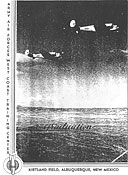
Fig. 2--Kirtland Field, Albuquerque, New Mexico--Graduation Program
| ARMY AIR FORCES BOMBARDIER SCHOOL Kirtland Field, Albuquerque, New Mexico | ||
|---|---|---|
| GRADUATION EXERCISES | ||
| Invocation | CHAPLAIN MILLARD R. BROWN USA | |
| Introduction | COL. JOHN P. RYAN, AC | |
| Address | A/C BELMONT W. McCORMICK | |
| Presentation of Diplomas | COL FRANK D. HACKETT, AC | |
| Presentation of Bombardier Wings | COL. JOHN P. RYAN, AC | |
| Oath of Office | MAJOR ANTONE BORECKY. AC | |
| Benediction | CHAPLAIN MILLARD R. BROWN, USA | |
| Faculty Board | ||
| COL. FRANK D. HACKETT, AC | Commandant | |
| COL. JOHN P. RYAN, AC | Asst. Commandant and Director of Training | |
| LT. COL. NEILL P. JOHNSON, MC | Senior Flight Surgeon | |
| MAJOR ANTONE BORECKY, AC | Commandant of Student Officers and Commandant of Cadets | |
| MAJOR ADOLF M. WRIGHT, AC | Dir. of Flight Tng. | |
| MAJOR HENRY L. LAW, JR, AC | Deputy Dir. of Flight Tng. | |
| CAPTAIN JOHN R. BURKE, AC | Dir. of Ground Tng. | |
| CWO ARTHUR W. THOMAS, AC | Secretary | |
| GRADUATING CLASS | ||
|---|---|---|
| STUDENT OFFICERS | ||
| Capt. Reaves, Johnnie Andrew Capt. Van Der Heyden, Edward Eugene 1st Lt. Fisher, Jr., Harvey DeWayne 1st Lt. Peterson, Roger []evitt 1st Lt. Thomas, Frank Clifton 1st Lt. Wray, Albert Max |
2nd Lt. Beeler, Jr., Robert Lee 2nd Lt. Eyre, Francis Thomas 2nd Lt. Guerrina, Louis Elmer 2nd Lt. Yarbrough, John Franklin WOJG Hafstrom, Ivan Theodore | |
| AVIATION CADETS | ||
| Allred, Jerry Edward Bell, Joseph Lloyd Bennett, Charles William Berbary, George (NMN) Bethel, John William Arthur Biskop, James Kent Blythe, Jack Martin Bradley, Jr., Herbert Arthur Brannon, Richard Ellis Brayton, Wells Arthur Barak, Nathan (NMN) Campelosi, Anthony James Cazean, Elden Jerome Chloupek, Raymond Frederick Chrara, Stephen (NMN) Chora, Joseph (NMN) Clark, Oliver Eugene Coffey, Stephen James Coken, Isaac (NMN) Condre, William Clark Conners, Ernest Belmont Corbin, Frederick Aloysius Cottrell, John Winston Czyzenicz, Chester Henry Devine, Jr., John Joseph Dye, Joseph John Eichas, Eugene Michael Erickson, Benjamin Willis Fagan, James Edward Festa, John Vincent Feuchter, William []iet Friedman, Murray David Gable, Burnett Franklin Gay, Wilmer Ira Gelinas, Richard John Gottlick, Stanley Irving Green, Wayne James Gregory, Jack Gardner Guidry, Jr., Edmund Vaughn Guay, Stanley Paul Hamlin, Clarence Anthony Harding, Lawrence Joseph Grover Hemmer, Milton Joseph Hura, Edward George Jorgensen, Earl Lambert King, John Stanley Kinne, Kermit Henry Kjolhede, Clifford J. |
Kjzormiski, Frederick Peter Krapcka, Edward Lee Lawrence, Ellsworth Paul Lincoln, Bela Hartley Long, Walter John Lynch, Francis Hugh McCarty, David Jesse McCormick, Belmont Wellington Mask, Bradley LeGrand Mayfield, Ralph Cabiness Mitchell, Harold Russell Morley, Bernard Patrick Moyle, George Bemmer Napoli, Giuseppe George Nurnberg, Donald Kenneth Olinger, Harold Ray Ostrem, Frederick Charles Panos, Pete San Park, Arthur Desmond Parker, Jr., William Charles Perricelli, Michael John Persoff, Barry Jay Plattcherze, Leonard Andrew Rohr, Lester Edward Sanger, Edward Robert Schumaker, Jack John Sharp, Merrill Barling Sickles, Hardie Justus Smith, Harold George Smith, Jams Robert Snyder, Charles Wellington Spencer, Thomas Roy Stelle, Clifford Morrough Stupple, James Francis Taylor, George Julius Theiszam, Leo Raphael Vaughen, Richard Wesley Vediner, Neil Eugene Verketis, Frank Stephen Wade, Raymond Wesley Walsh, Robert Raoul Wajda, Thomas (NMN) Weisman, Wilton Morris Weldon, Richard Latus Whitehead, Dean Herbert William, Herbert Robert Wright, Clifford Walter Yurko, Walter (NMN) Zimmerman, John Leslie | |
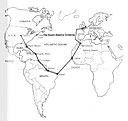
Fig. 3--The South Atlantic Crossing
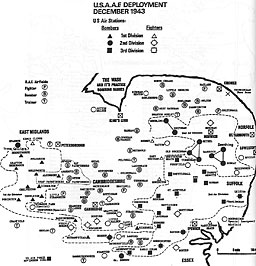
Fig. 4--USAAF Deployment, December 1943
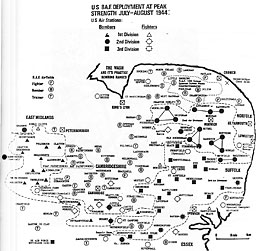
Fig. 5--Eighth Air Force Deployment at Peak Strength: July-August 1944
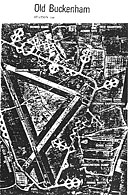
Fig. 7--Old Buckenham--aerial photo
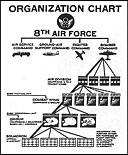
Fig. 8--Organization chart--Eighth Air Force
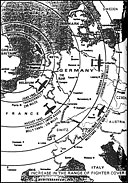
Fig.9 -- Increase in the Range of Fighter Cover
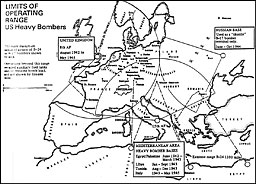
Fig. 10-- Limits of Operating Range: US Heavy Bombers
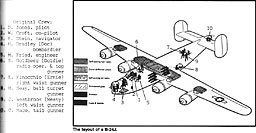
Fig. 11-- The layout of a B-24J

Fig. 12-- Total Growth of Combat Units--8th AF in U.K., 1942-1945
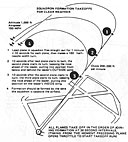
Fig. 13--Squadron Formation Takeoffs for Clear Weather (Overhead View)
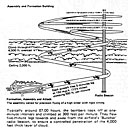
Fig. 14--Squadron Formation Takeoffs for Clear Weather (Lateral View)
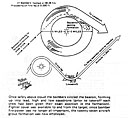
Fig. 15--Forming up after takeoff

Fig. 15a--Bombing Formation, From Initial Point

Fig. 16--Group Landing Procedure at Base

Fig. 17--Section Formation Diagram (Pre-flight Briefing--Fredrichshafen, 18Mar44)

Fig. 18--German V1--Fieseler F1. 103--Flying Bomb

Fig. 20--The CROSSBOW Network, January 1944
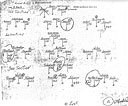
Fig. 21--Mission No. 28 Section Formation Diagram (Showing mission losses)

Fig. 22--Briefed Routes: Brunswick (8Apr44) & Politz-Tutow (29May44)

Fig. 23--Mission No. 49 Section Formation Diagram
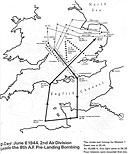
Fig. 25--D-Day: June 6, 1944. 2nd Air Division Leads the 8th A.F. Pre-Landing Bombardment

Fig. 25a--The Normandy Landing, 6 June 1944
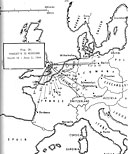
Fig. 26--Bradley's 323 Missions, March 16-July 2, 1944 (Chart)
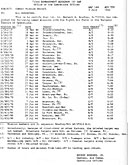
Fig. 26a--Bradley's 323 Missions, March 16-July 2, 1944 (List)
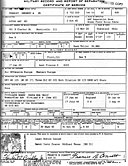
Fig. 27--Military Record and Report of Separation; Certificate of Service
--71--
